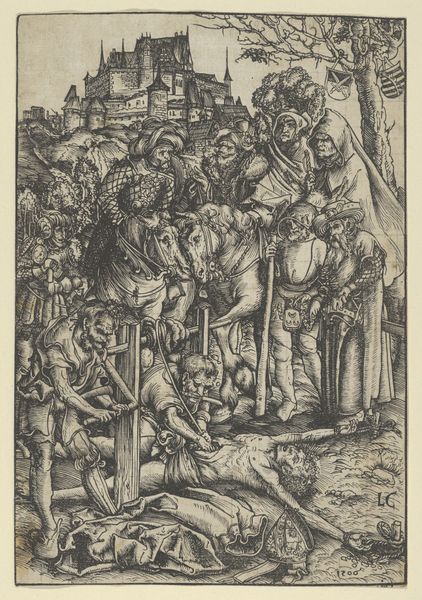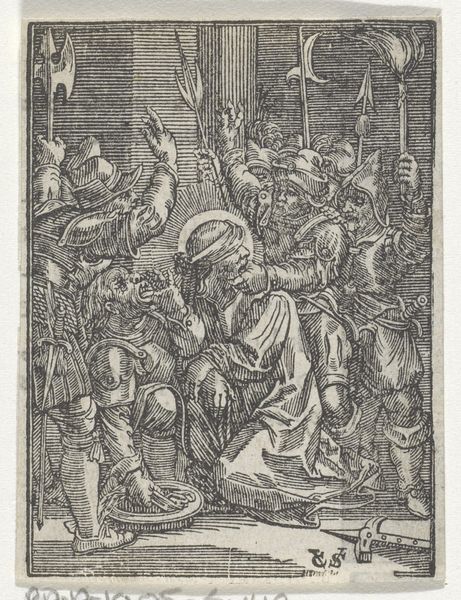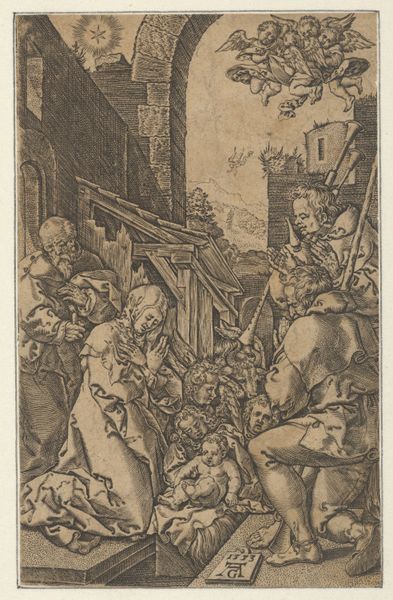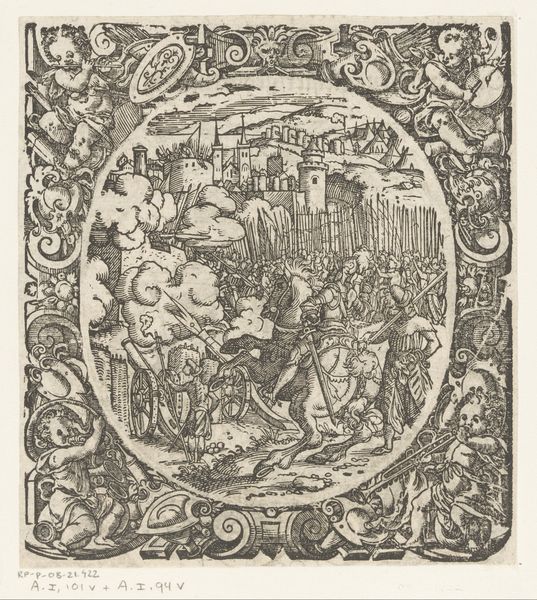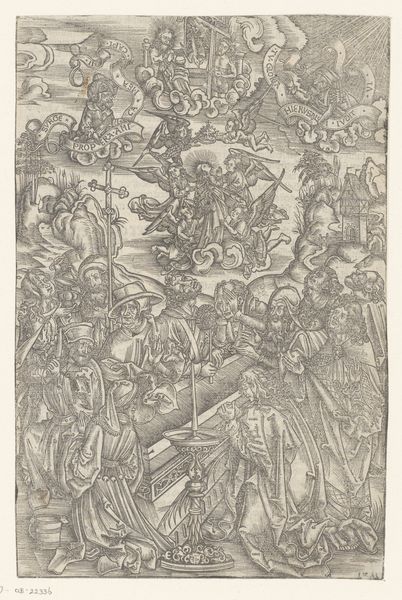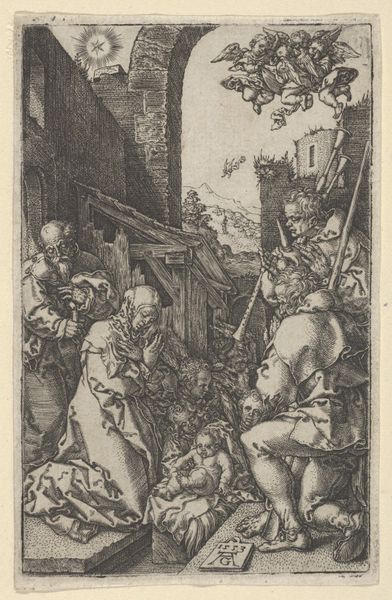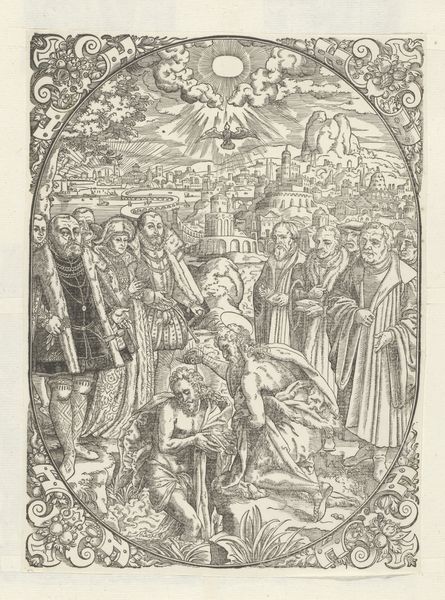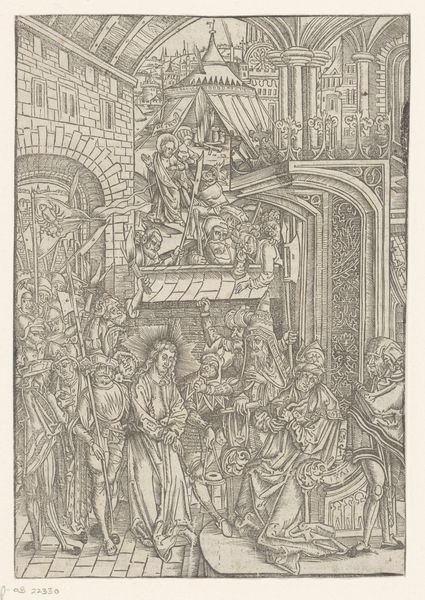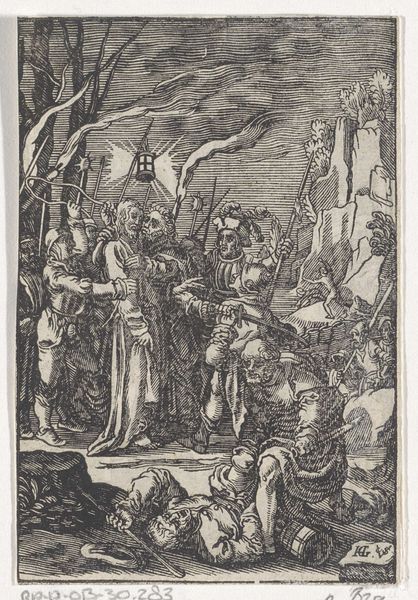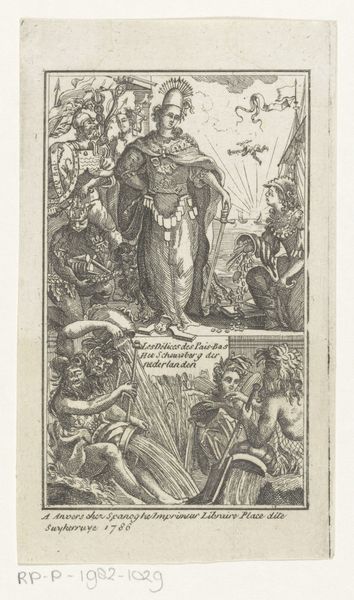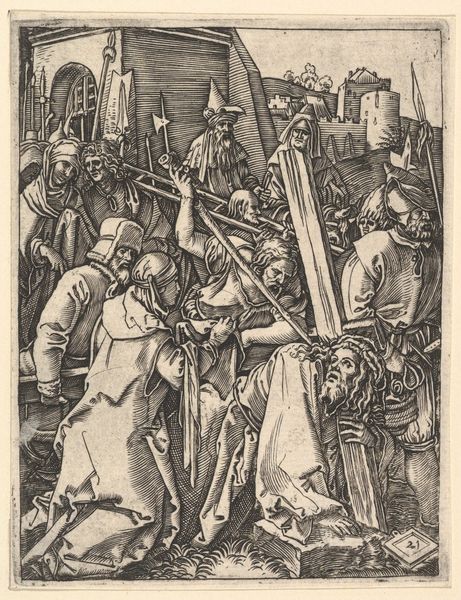
print, ink, woodcut, engraving
#
narrative-art
#
pen drawing
# print
#
pen illustration
#
figuration
#
ink line art
#
ink
#
woodcut
#
line
#
history-painting
#
italian-renaissance
#
engraving
Dimensions: height 203 mm, width 151 mm
Copyright: Rijks Museum: Open Domain
Curator: This print is entitled “Aanbidding der Koningen,” or “Adoration of the Kings.” Created around 1517, this piece employs ink, engraving and woodcut techniques to depict a traditional biblical scene by an anonymous artist during the Italian Renaissance. Editor: Oh, wow. My first impression? It feels both grand and incredibly intimate. There’s so much detail packed into this small space. Look at all those expressive faces—each seems to carry a story of its own. It's like a play is happening here. Curator: The adoration scene is laden with rich symbolism, representing not only faith, but also themes of power and acknowledgement. Notice the composition. The Virgin and Child form a visual anchor, halos emphasizing their divinity, while the kings, positioned respectfully around them, symbolize earthly acknowledgment of spiritual authority. Editor: Right, the kings' gifts...the composition reminds me how storytelling uses material objects to build spiritual ideas, the literal offerings representing an inward recognition of higher purpose. Does the Renaissance context give these figures some additional visual heft? They seem really individualized, far beyond the general symbol. Curator: Precisely! The Renaissance, with its humanist revival, often invested individual figures with character and emotional depth. Their expressions, clothing, even their postures reveal subtle aspects of character, contributing to a complex psychological landscape within the scene. You’re seeing both a religious observance, and a dawning humanism in that observation. Editor: And, wow, consider what it means for an anonymous artist. They poured meticulous detail, and a complex understanding of devotion, into creating these lines. I imagine they would find ways to include meaning only visible for those that shared in on certain symbolism that might have now become mostly lost on the majority of modern observers. Curator: True! It's interesting to consider what personal beliefs or artistic intentions drove an unknown person. Perhaps that adds another layer of veneration to our interpretation. Editor: So, as we look, we don’t just see a holy scene. It is an encounter that allows us to look closer to the cultural mindset that defined art as something between visual poetry, storytelling and deep personal expression. Curator: I would have to agree with that observation. This artwork transcends simple illustration to provide insights into Renaissance beliefs.
Comments
No comments
Be the first to comment and join the conversation on the ultimate creative platform.
